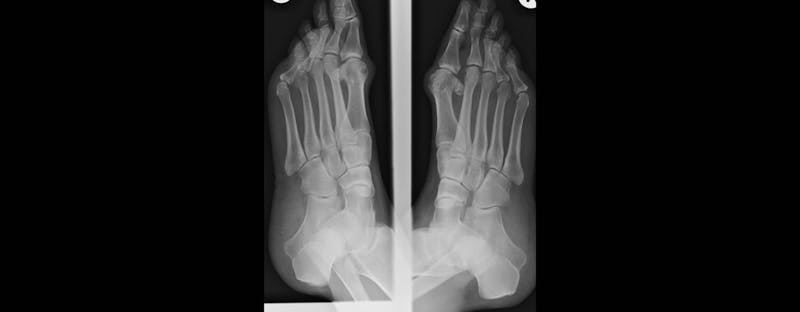Schedule a Consultation
Contact Us


A bunion occurs when the big toe pushes against the other toes and causes the joint to spur an extra growth. A bunion can develop for a variety of reasons and can cause a wide range of symptoms. It can also mimic other foot problems and could be a sign that there is a more serious condition present.
What are the symptoms of bunions?
Individuals generally recognize they may have a bunion when they see a red spot at the base of the big toe on either foot. This redness may be accompanied by pain, tingling, or numbness. The redness and the pain in the area of the big toe are often in conjunction with a large bump sticking out on the base of the toe. Those who have had bunions may not be able to move their toe as well as they were able to before they got a bunion. Common precursors to bunions are thickening of the skin at the base of the big toe and excessive callouses and corns in the area.
What causes bunions?
Bunions are generally caused when there is restricted movement of the toes. The most common way that this occurs is by wearing shoes that are narrow at the end. As a result, women are more likely to get bunions than men due to the use of high heels, which greatly restrict the movement of the toes. Shoes that are not the right size also have the potential to cause bunions. Individuals who are overweight also get bunions more than people who are of healthier weight, because their feet are sometimes unable to fit comfortably in a regular-width shoe.
How are bunions diagnosed and treated?
A doctor can usually diagnose a bunion by evaluating your medical history and performing a physical examination on the toe that is being affected.
The first step in treating bunions is to stop wearing the tight or poorly fitted shoes that could be causing the problem. Doctors may also provide padding and shoe inserts for individuals who are experiencing pain. Those with a history of multiple or persistent bunions may need surgery to remove the extra tissue in the joint.
While bunions may seem like a small annoyance at first, it is still important to seek medical care. Ignoring a bunion can lead to more serious problems, like reduced movement of the feet, and can even cause infections.